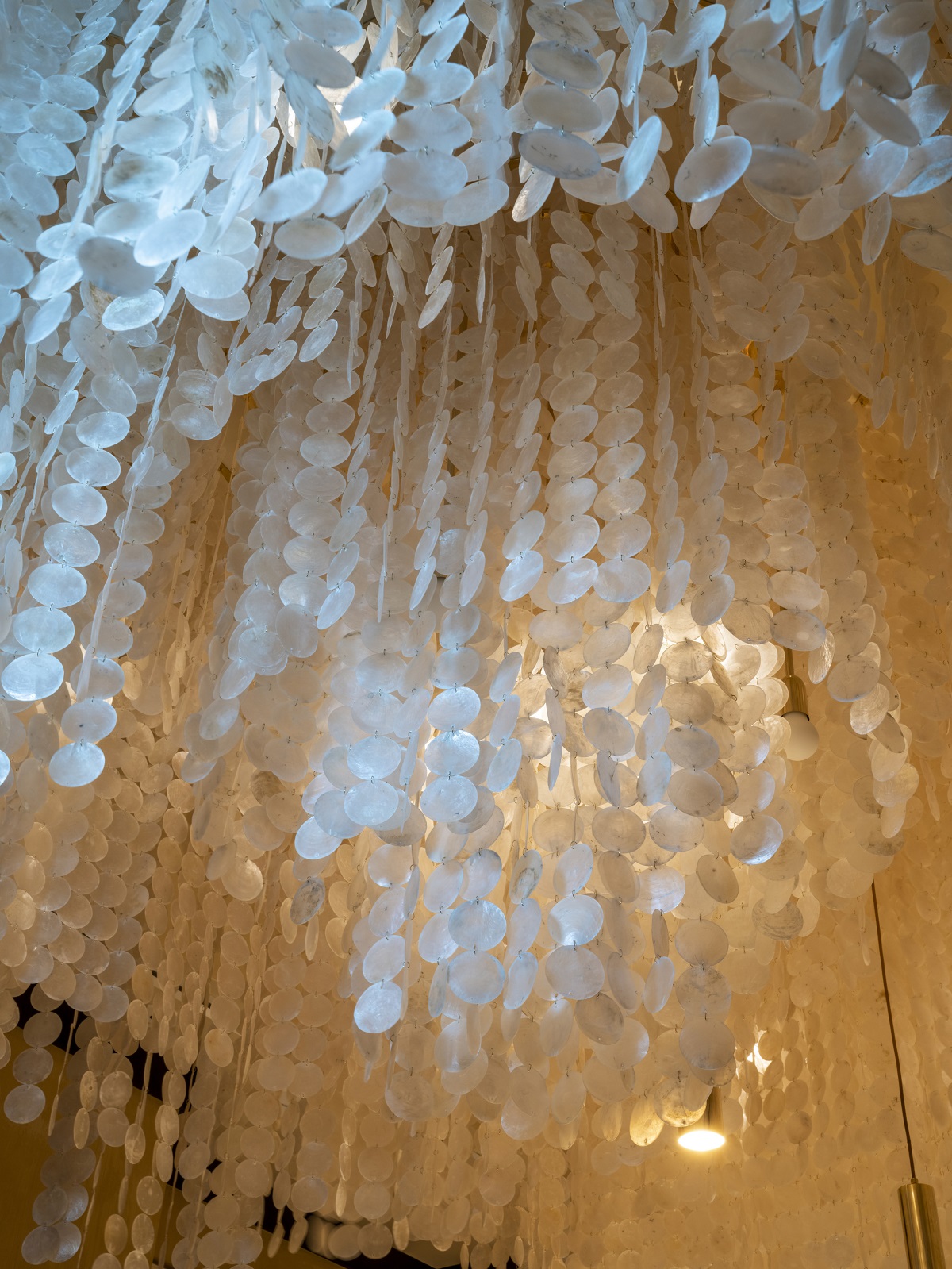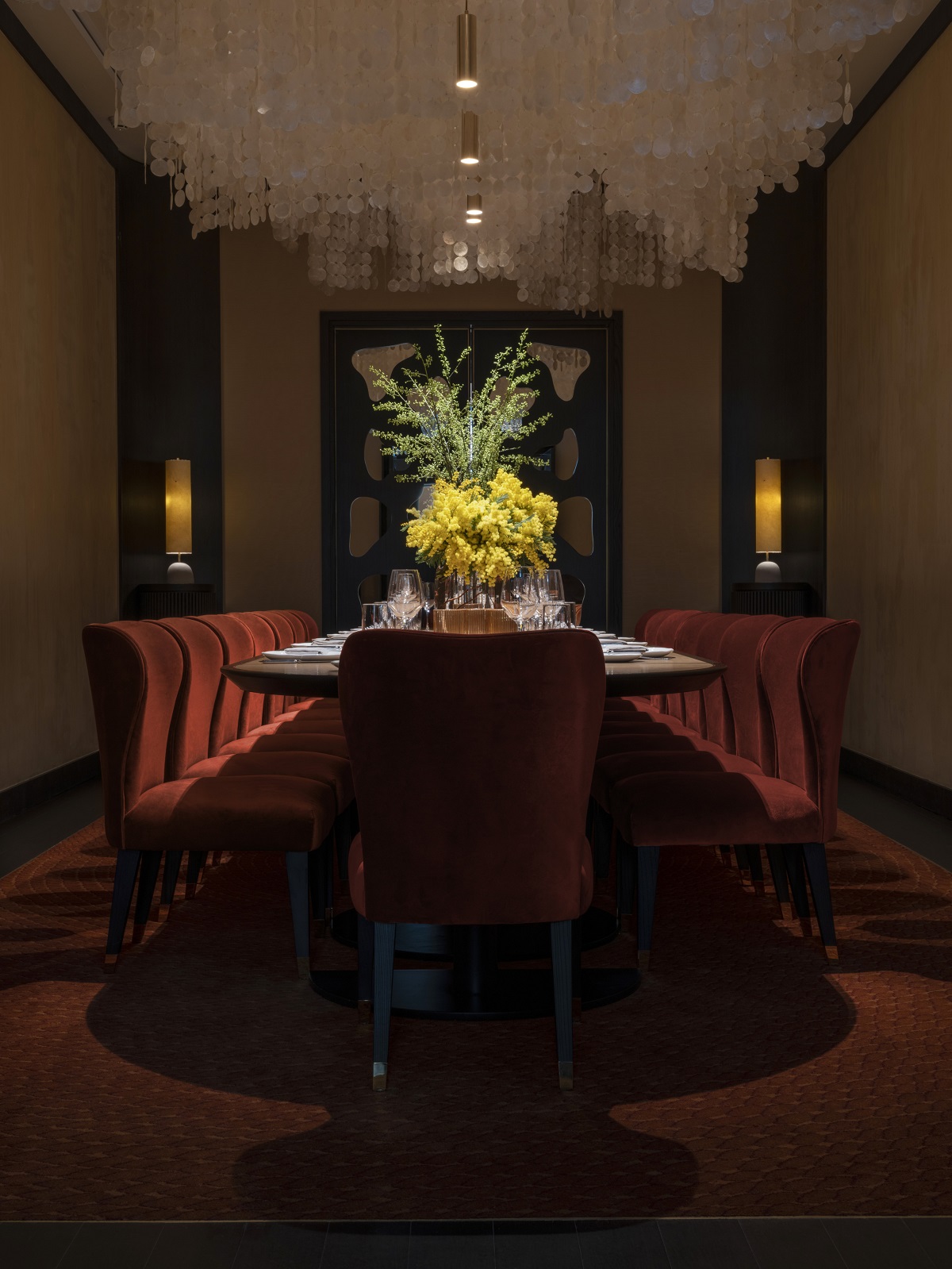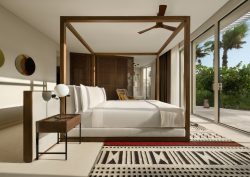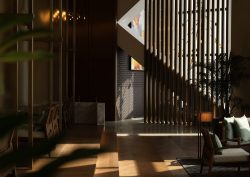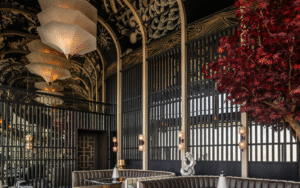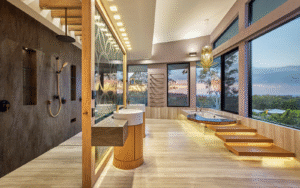Checking in to the Waldorf Astoria Lusail Doha, writer Pauline Brettell discovers all the levels of wellness along with the considered elements of design on offer in the ESPA flagship spa, spread over three levels of this curvaceous hotel on the edge of the Arabian gulf…
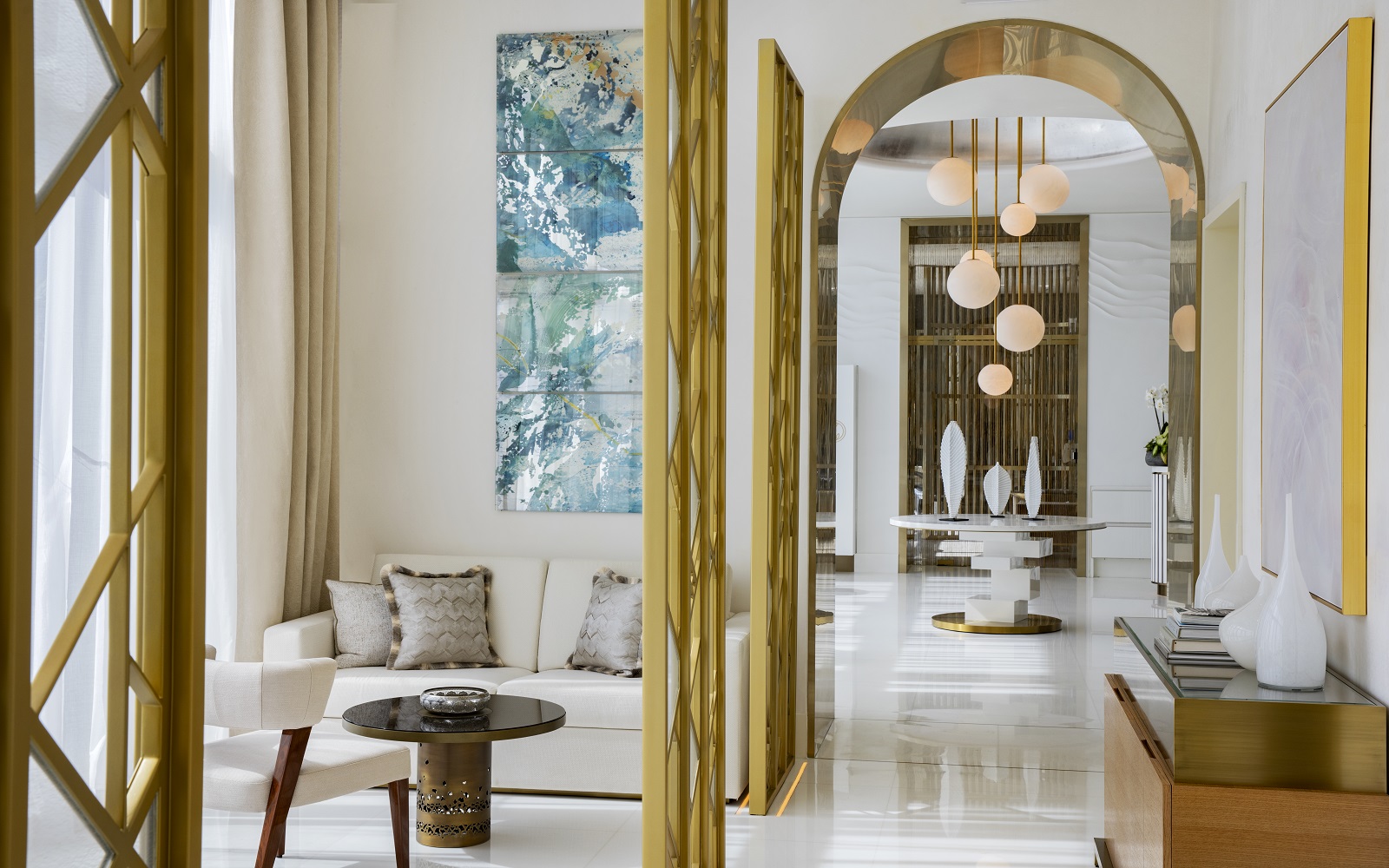
Transforming Doha from a stopover into a destination has been a key part of its development, as travellers are invited to venture beyond the airport to discover the city along with all the levels of luxury and hospitality housed within its striking skyline. Moving out from the air-conditioned airport into the warmth of the Doha desert breeze, already felt like a step in a restorative direction – and that was before even setting foot within the cocooning luxury of the Waldorf Astoria Lusail Doha and embracing all the ESPA elements of wellness on offer.
Image credit: Waldorf Astoria Lusail Doha
Driving across town, the hotel rises up along the coast of the newly developed Lusail area, with its striking architectural structure inspired by the concept of flight. The design, by WATG, is all about curved forms and sinuous lines, which define the exterior shell and travel all the way though the property, giving the space a very literal sense of flow. There is not a sharp corner in sight and the entire hotel feels a little like it is preparing to set sail.
Stepping out from a guestroom finished in colours reflecting the sky above and the ocean beyond is a seamless transition, and the sweeping balcony that wraps around the hotel makes a strong linear statement on every level. I can now also say from experience, that it is the perfect place to relax with a cold glass of wine while watching the sun set over the gulf – because luxury hospitality is about real experiences and moments that live long in the memory.
After surveying the sunset and admiring the designer lines of the facade, it was time to step back inside and embark on a slightly more introspective journey of wellness with the ESPA team.
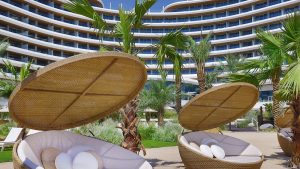
Image credit: Waldorf Astoria Lusail Doha
From the pared back palette of the guestrooms, to its iconic Peacock Alley and through to the spa, there are two striking elements about this property – one is the attention to detail within the design narrative, from the construction of the façade – and its subtly striated surface material – through to the characteristics of the books on the shelf next to your bed, while the second, is lighting, which again plays a role in furthering that storyline. Every element is underscored by the plot that is particular to the Waldorf Astoria Lusail.
While embracing the international ethos of the brand, this Waldorf still tells a story of location through materials, colours and other visual references. Focussing on the history of Doha’s pearl industry, the opalescent surfaces and orb like lighting all contribute to the Doha story that has been seamlessly merged with elements of New York Art Deco that is quintessentially Waldorf.
The interiors are a collaboration between some of the most established designers in the hospitality arena, and include WATG, David Collins Studio, Pierre Yves Rochon and Nulty Lighting. All have translated elements of this Doha narrative while retaining the essential elements of international luxury that is associated with both the Waldorf and ESPA brands.
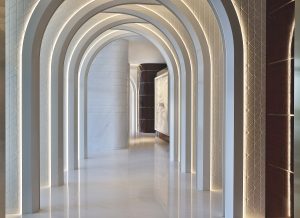
Image credit: ESPA
The synchronicity between ESPA and Waldorf Astoria feels like the peaches and cream – or should that read as the chia and coconut – of collaborations and is one that has elevated the spa experience, on both the design and a wellness front, moving the concept of luxury into a far more holistic realm, that is both restorative and aspirational. This spa is certainly not a destination in the basement, nor is it located at the far end of the hotel, it is instead a key part of what the hotel offers and has been integrated into the design over three levels, with an unprecedented amount of space and attention being given to wellbeing detail. It encompasses feeling and lifestyle as much as it does the treatments it serves.
Before even entering the spa, the design draws you into the space visually with the entrance marked by a series of gently illuminated arches, creating one of those enticing design moments, almost channelling guests into a new state of mind.
Having stepped though the portal into the wellness realm, the space – designed by Pierre-Yves Rochon (PYR) – opens up into a light and bright interior that is again punctuated by atmospherically lit corridors, which direct you to quieter areas and treatment rooms. Importantly, all the senses are engaged at every turn, as light and shade, shape, texture and scent all contribute to the whole experience. Before you even embark on a treatment, you are part of a sensory design journey.

Image credit: ESPA
The spa design is again part of the Doha narrative. Here, the PYR studio has taken inspiration from the Arabic fable where ‘pearls are created from dew drops during the nights of a full moon’. This sets the tone for the design and is quietly referenced throughout, with the representation and the illusion of the pearls consistently threaded through the space.
The journey then continues to unfold as you move from the reception into the lounge, where the statement lighting acts as a further, gentle nod to the design inspiration. The surfaces used throughout, are pages from the same book, as the pearly tones and textures alternatively shimmer and reflect through the space.
Consistently, lighting is fundamental in expanding the narrative and transitioning and defining areas according to function. The treatment rooms feature soft, low lighting. The treatment pools maximise reflective lighting off shimmering mosaic surfaces, while the gym, sheltering a more energised atmosphere, is full of natural light drawing from its indoor/outdoor location.
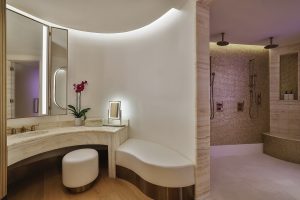
Image credit: ESPA
The design and concept behind the ESPA spa is indicative of the direction of luxury hospitality and wellness. It is the full story of restorative wellness and how design can compliment that process that is indeed the luxury here – it is about lifestyle and it is about giving guests the tools to continue this journey beyond the hotel and spa walls.
It is also about how this voyage of hospitality is integrated into the fabric of the hotel. Yes, there are private treatment rooms, but there is also an emphasis on communal spaces. There are wellness areas that involve social connection, like the hammam, the curated F&B offering, or as in our case, the opportunity to take the yoga class outside onto the pier – although even in the gentle early morning Doha sunshine, the session felt a little more Bikram than Hatha, so make sure you pack your SPF factor 50!
Main image credit: ESPA




